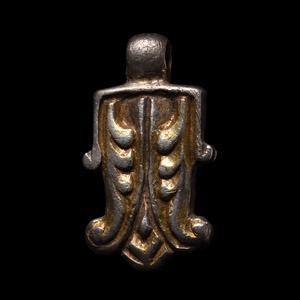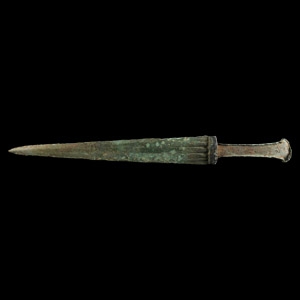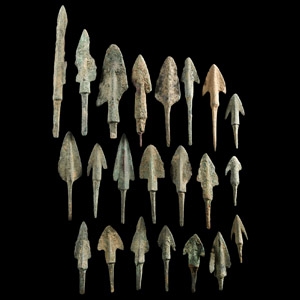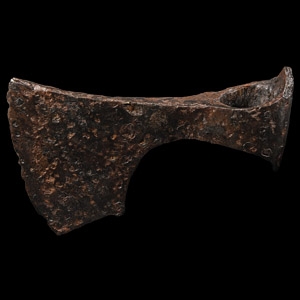Home > Auctions > 23 - 27 May 2023
Ancient Art, Antiquities, Natural History & Coins
Auction Highlights:
Acquired from Holts Auction, 2020, lot 899.
Formerly with a Kent collector.
With TimeLine Auctions, lot 1086.
Property of an Australian collector.
Accompanied by Holts lot ticket.
Sold as an exempt item under Section 58 (2) of the Firearms Act, 1968, to be held as a curiosity or ornament. No license required but buyer must be over 18 years of age. Overseas bidders should note that, due to UK regulations governing export of all firearms, overseas buyers will need to make arrangements for shipping this lot out of the UK directly, by air freight, with a specialist company or agent.
Acquired on the UK market.
Property of a Kent collector.
Sold as an exempt item under Section 58 (2) of the Firearms Act, 1968, to be held as a curiosity or ornament. No license required but buyer must be over 18 years of age. Overseas bidders should note that, due to UK regulations governing export of all firearms, overseas buyers will need to make arrangements for shipping this lot out of the UK directly, by air freight, with a specialist company or agent.
Ex G. White collection, 1990s.
Acquired 1971-1972.
From the collection of the vendor's father.
Property of a London, UK, collector.
See Wilkins, A., Roman Imperial Artillery, Solway Print, 2017.
The operation of the onager (Latin for 'wild ass') is first mentioned in 353 A.D. by Ammianus Marcellinus in his Res Gestae and more fully in Vegetius's Epitoma Rei Militaris probably written in the reign of Emperor Theodosius I (378-395 A.D.).
Acquired on the German art market around 2000.
From the collection of a South African gentleman.
See Bockius, R., 'Zu den Elbgermanischen Kreisplattensporen der frühen römischen Kaiserzeit' in Jahrb. RGZM 38, 1991, pp.497-514, fig.3 fr similar but not identical provincial Roman spur from Martofte.
The prick spur was the first type of spur to be invented, and it consists of a goad or prick, more or less pointed, connected to side arms or a heel plate. They went around the rider’s heel and had a straight post on the back that was used to cue the horse. Often this was sharp, obviously intended to prick the horse, The type here represented seems to be a provincial variant of Roman Imperial prick spur fitted with three eyelets.
Acquired 1960s-1990s.
Late Alison Barker collection, a retired London barrister.
See Robinson, R., The Armour of Imperial Rome, New York, 1975; Garbsch, J., Römische Paraderustüngen, München, 1979; Born, H., Junkelmann, M., Römische Kampf-und Turnierrüstungen, Band VI, Sammlung Axel Guttmann, Mainz, 1997; D'Amato R., Negin, A.,Decorated Roman Armour, London, 2017.
The spiral decoration of the face-guard is connected with the solar cult. The spiral represents the rotary movement of the sun, and the spiral is probably the oldest known spiritual symbol connected with the sun, together with the swastika or tetragammadion. The connection can also be seen in Celtic art, where the representation of the spiral also follows the path of the sun, describing the movements of the heavenly body over the course of a solar year. The third century was characterised by diffusion of the solar cult, the Sol Invictus, among the Roman soldiers, with its symbols often represented on arms and weapons as an apotropaic element of protection.
Ex London, UK, collection, 1990s.
Accompanied by an academic paper by military specialist Dr Raffaele D'Amato, dated 15 July 2019 and titled 'Eastern Roman Empire - Greek Fire Bomb or Hand Grenade (μεσαίον kακάβιον) 9th-11th century AD'.
Cf. Arendt, W. I., Granaten des 13-14. Jahrhunderts, die an der Wolga gefunden sind, Zeitschrift fur Historische Waffen-und Kostumkunde, 11 (1926-8), p.42; cf. Arendt, W., Die Spharisch-konischen Gefasse aus Gebranntem Ton, ibid; cf. Ayalon, D., Gunpowder and Firearms in the Mamluk Kingdom, London, 1956, p.16.
Apart from the use of siphons or manual flame-throwers called cheirosiphona, special corps of Roman soldiers employed terracotta grenades, in the form of small jars, abundantly evidenced in archaeological excavations. Such were the γανωτα, vessels (sometimes also of bronze) used for Greek fire. They were called μεσαία kακαβιά or κυτροκακάβια where the former had a bulbous shape and the latter a more cylindrical form.
Acquired 1960s-1990s.
Late Alison Barker collection, a retired London barrister.
See Robinson, R., The Armour of Imperial Rome, New York, 1975; Garbsch, J., Römische Paraderustüngen, München, 1979; Born, H., Junkelmann, M., Römische Kampf-und Turnierrüstungen, Band VI, Sammlung Axel Guttmann, Mainz, 1997; D'Amato R., Negin, A., Decorated Roman Armour, London, 2017, especially figs.61, 273, 274.
The decoration of Roman weaponry contained themes that were directly associated with state propaganda, as well as with the Imperial cult. As the god-protector of the state and the army, Jupiter was the most esteemed. The combination of an eagle (helmet), Minerva and bust of Mars (armour) can also be understood as an image of dii militares.
Acquired in the 1980s-1990s.
Ex an important central London gallery, London W1.
See Ivanov, A.A., 'Finds of belt sets from burial mounds of the Khazar time of the Lower Don and the Volga-Don interfluve (in Russian)' in Cultures of the steppes of Eurasia in the second half of the 1st millennium AD. (from the history of the costume), T. 2. Samara, 2001, pp.118-131.
In the development of the Seversky Donets basin, together with the Alans and other bearers of the cremation rite, archaeology confirms the presence of tribes who practiced inhumation funeral rite with the eastern orientation of the dead (Netailovsky ground burial). Elements of belt sets, typical for this period, were found in these graves. Elements of the belt set similar to those found in the burials of the Netailovsky burial ground mainly come from the so-called ‘under-barrow burials with ditches’ of the 7th - first half of the 8th centuries, identified with the Khazars proper. Floral decoration of the belt elements, like this one, can be regarded as evidence of intensive contacts between the Khazars and Byzantium.
Ex German collection, Cologne, 1980-1990s.
Cf.identical type in Khorasani, M.M., Arms and Armour from Iran - The Bronze Age to the End of the Qajar Period, Tübingen, 2006, p.378, cat.8.
The dirk belongs to the type III in the Medvedskaya classification, but with a smallest hand guard at the base. The dating of type III to the 12th century B.C., suggested by Medvedskaya and confirmed by Khorasani, was based on the series of dirks with an inscription of the Babylonian King Nebuchadnezzar I and of the name of Marduk Nadin Ahhe on similar types of daggers.
Acquired 1990s.
From the collection of a late Japanese weaponry collector.
Acquired 1971-1972.
From the collection of the vendor's father.
Property of a London, UK, collector.
Cf. Nicolle, D., 'Raiders of the Ice War' in Military Illustrated, March, 1996, no.94, pp.26-29, fig.p.28, for similar axes; Sedov, B.B., Finno-Ugri i Balti v Epokhi Srednevekovija, Moscow, 1987, pl.V, item 16.
During their struggles against Germans and Teutonic Knights, deceased pagans were often cremated along with damaged or ceremonially sacrificed weaponry. If swords were generally reserved for the military elite, the side axe was one of the most commonly used weapons.
805 - 816 of 2508 LOTS

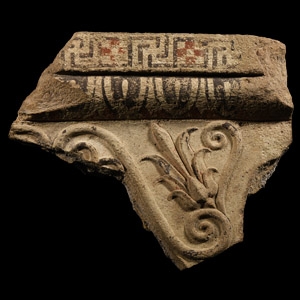
.jpg)


.jpg)
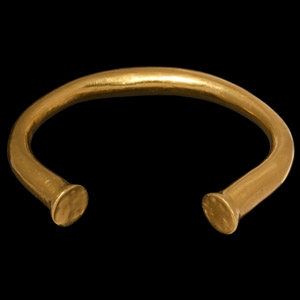
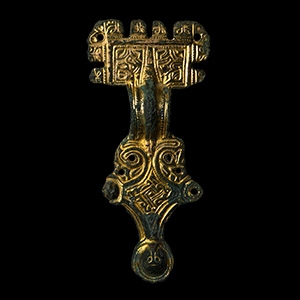

.jpg)
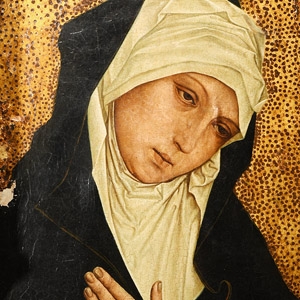

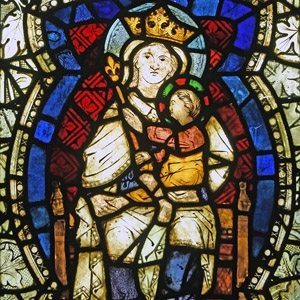
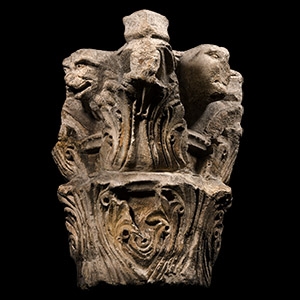
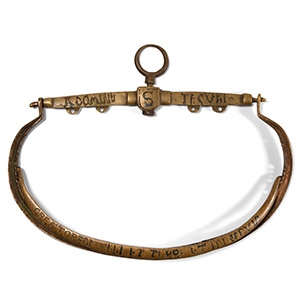
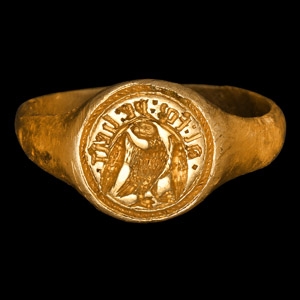
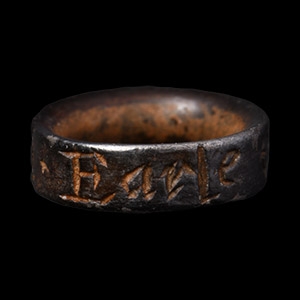
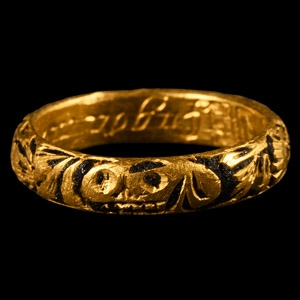
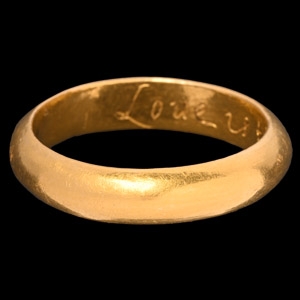
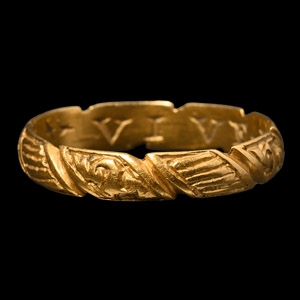
![English Milled Coins - George VI - 1937 - Cased RM Proof Coronation Gold Set [4] English Milled Coins - George VI - 1937 - Cased RM Proof Coronation Gold Set [4]](https://timelineauctions.com/upload/images/items/small/203351-s(2).jpg)
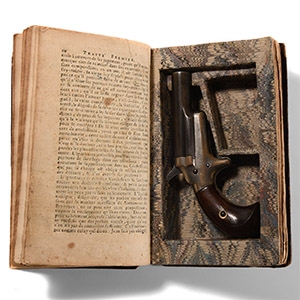
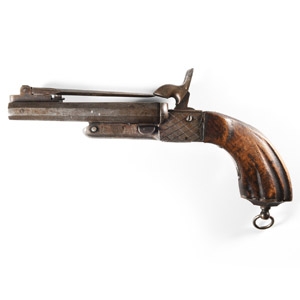

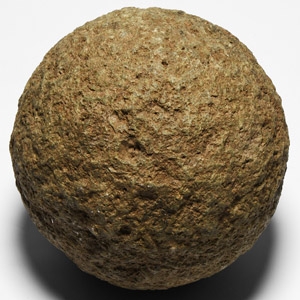
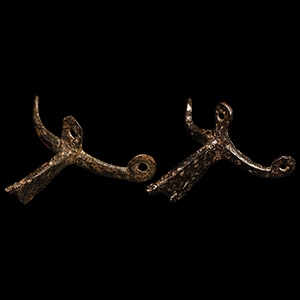

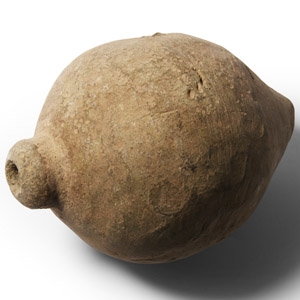
.jpg)
